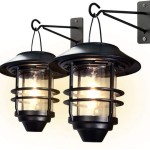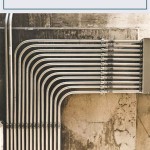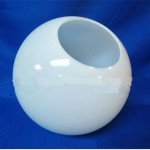How To Use Outdoor Extension Cords
Outdoor extension cords are essential for powering tools, lights, and other devices in your yard, garden, or patio. However, improper use can lead to electrical hazards, damage to equipment, and even injuries. This article will guide you through the safe and effective use of outdoor extension cords.
Choosing the Right Extension Cord
The first step in using an outdoor extension cord safely is selecting the appropriate one for your needs. Consider the following factors:
- Gauge Size: The gauge size (AWG), indicated on the cord, refers to the thickness of the wire. A lower gauge number (like 12 AWG) indicates thicker wire and a higher current capacity. For tools requiring high power, choose a heavier gauge cord.
- Cord Length: Avoid using extension cords longer than necessary, as longer cords have higher resistance and reduce power output.
- Voltage: Ensure that the extension cord's voltage rating matches the device you are powering.
- Durability: Look for cords with thick, durable insulation and a weather-resistant outer jacket to withstand exposure to the elements.
- Type of Plug: Select a cord with the appropriate plug type for your device and outlet.
Safe Practices for Using Outdoor Extension Cords
Once you have chosen the right extension cord, follow these safety practices to ensure a safe and reliable power supply:
- Inspect Cords Regularly: Before each use, inspect the cord for any signs of damage, such as cuts, frays, or exposed wires. Replace any damaged cords immediately.
- Avoid Overloading: Do not plug multiple high-power devices into a single extension cord. Overloading can overheat the cord, leading to a fire hazard. Refer to the cord's maximum wattage rating to determine its capacity.
- Protect Cords from Hazards: Keep cords away from heat sources, sharp edges, and moisture. Avoid running cords under carpets or furniture.
- Use Ground Fault Circuit Interrupter (GFCI) Protection: GFCI outlets and extension cords are essential for outdoor use, as they shut off the power instantly if a ground fault occurs, protecting you from electric shock.
- Secure Cords Safely: Use cord organizers or clamps to keep cords off the ground and prevent tripping hazards.
- Don't Use Extension Cords for Permanent Installations: Extension cords are designed for temporary use. If you need permanent power in an outdoor area, consult with an electrician to install a dedicated circuit.
Common Mistakes to Avoid
Here are some common mistakes that people make when using outdoor extension cords:
- Using Damaged Cords: Never use a damaged extension cord. Even small cracks or frays can compromise its safety and lead to electrical hazards.
- Running Cords Through Doors or Windows: This can damage the cord and create a fire hazard.
- Using Extension Cords as a Substitute for Wiring: Avoid using extension cords for permanent power installations. They are not designed for continuous use and can overheat.
- Ignoring the Cord's Capacity: Overloading an extension cord by plugging in too many devices can cause overheating and a fire hazard.
By following these guidelines, you can ensure that you use outdoor extension cords safely and effectively. Always prioritize safety when working with electricity, and never hesitate to consult a qualified electrician if you have any doubts or concerns.

How To Tell If An Extension Cord Is Safe Use Outdoors

How To Safely Use Extension Cords Outside Fusion Electric

Extension Cord And Power Strip Safety

Indoor And Outdoor Extension Cords Power Cord

Weatherproof An Extension Cord Tommy Tape Self Fusing Silicone
The Differences Between Indoor And Outdoor Extension Cords Hunker

Differences Between Indoor Outdoor Extension Cords Brase Electrical

What S The Best Way To Run Power Outside Mr Electric

How To Tell If An Extension Cord Is For Outdoor Use

How To Tell If An Extension Cord Is For Outdoor Use







